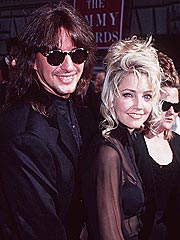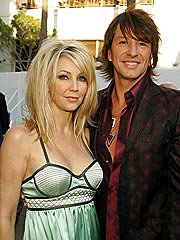"Jaws" author Peter Benchley dead at 65
Sun Feb 12, 2006 8:56 PM ET
By Chris Michaud
By Chris Michaud
NEW YORK (Reuters) - Peter Benchley, author of the bestseller "Jaws" that was the basis for the blockbuster movie that terrified beachgoers and kept many out of the water for years, died at his home at age 65, his family said on Sunday.
Benchley, well-known for other water-based suspense fiction including "The Deep" and "The Island," which also spawned films, died of complications from pulmonary fibrosis, his son-in-law Chris Turner told Reuters.
Benchley was diagnosed with the condition last autumn and his health had been diminishing, but his death at this time had not been expected, according to Turner.
"It was peaceful," he said, adding that the writer's wife Wendy and other family members were by his side at their Princeton, New Jersey home.
In addition to the fame he achieved as a novelist, Benchley was a reporter for the Washington Post and Newsweek, wrote for magazines and a speechwriter for President Lyndon B. Johnson from 1967 until January, 1969.
The Harvard graduate, who grew up in New York City and went to prep school in New Hampshire, was also the grandson of writer and humorist Robert Benchley, member of the renowned Algonquin Round Table that included personalities such as Dorothy Parker, George S. Kaufman, Robert Sherwood and Alexander Wolcott.
But it was the 1974 novel "Jaws," about a series of gruesome shark attacks that cause panic in a placid beach resort, that Benchley won the kind of fame rarely accorded any writer of popular fiction.
The book has sold more than 20 million copies, and Benchley even had a cameo as a reporter in the 1975 Steven Spielberg film, which spawned a series of inferior sequels.
Benchley said he had been interested in sharks since his childhood days spent on the island of Nantucket off Massachusetts. Then, in 1964, he read about a fisherman who caught a 4,550-pound great white shark off Long Island.
"I thought to myself, 'What would happen if one of those came around and wouldn't go away?' That was the seed idea of 'Jaws,'" he said in an interview on his Web site.
But he didn't pursue the idea until 1971. By the time the book, his first novel, came out in early 1974, it had earned more than $1 million before the first press run, including $575,000 for the paperback rights and from sales to books clubs and the film's producers.
Benchley continued his lifelong fascination with the sea and its potential terrors with "The Deep," about divers looking for treasure, and "The Island," in which sailors are terrorized by modern-day pirates. Among his latest books was "Shark Life: True Stories About Sharks and the Sea," which was published only last year.
"Everything I've written is based on something that has happened to me or something that I know a great deal about," Benchley said.
"In 'Jaws' I knew a great deal about sharks. In 'The Deep' I had been lucky enough to learn about Bermuda and to meet Teddy Tucker, a great Bermudan treasure diver, while doing a story for the National Geographic, and I learned about shipwrecks in Bermuda," he added.
But, he noted, he was never injured by any sea creature other than jellyfish stings or sea urchin spines, although he was nearly bitten by sharks a few times.
Other books included "White Shark," "Beast," about a giant squid, and "Rummies," about an alcoholic's journey through recovery and rehabilitation.
Besides his wife Benchley is survived by two grown children. Funeral arrangements have not been formalized.


